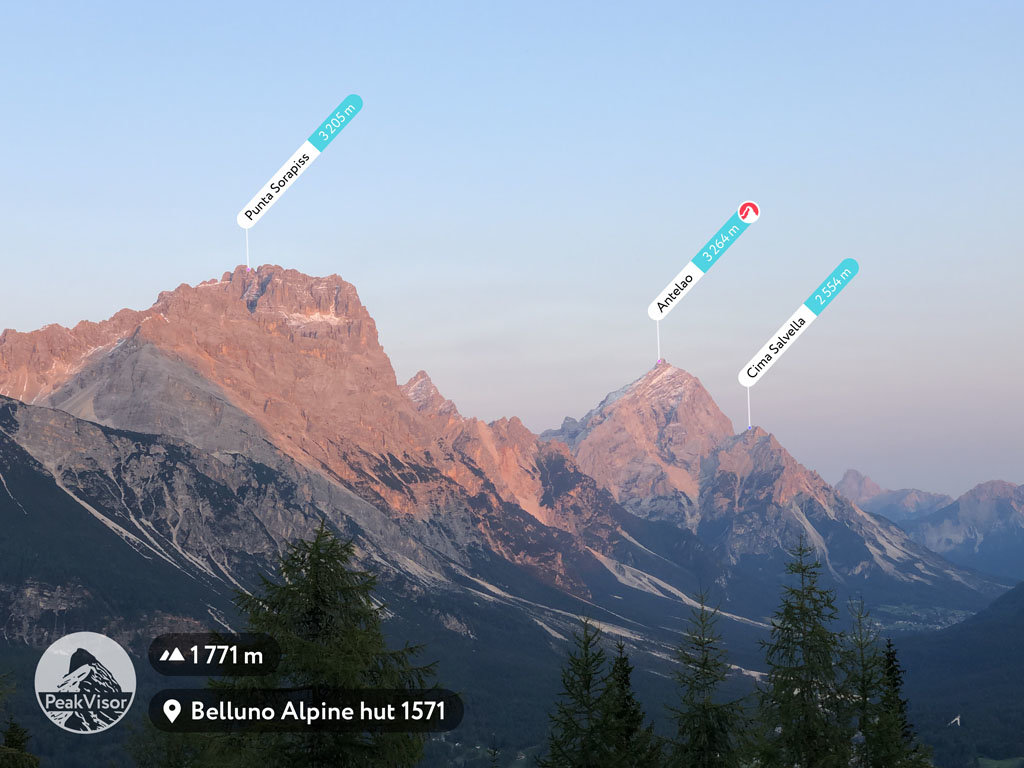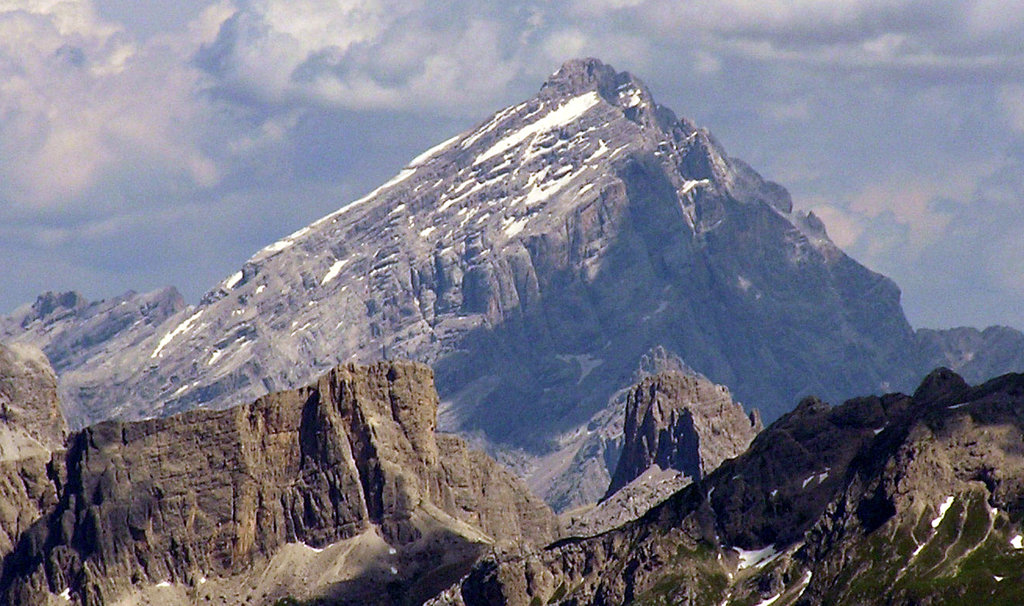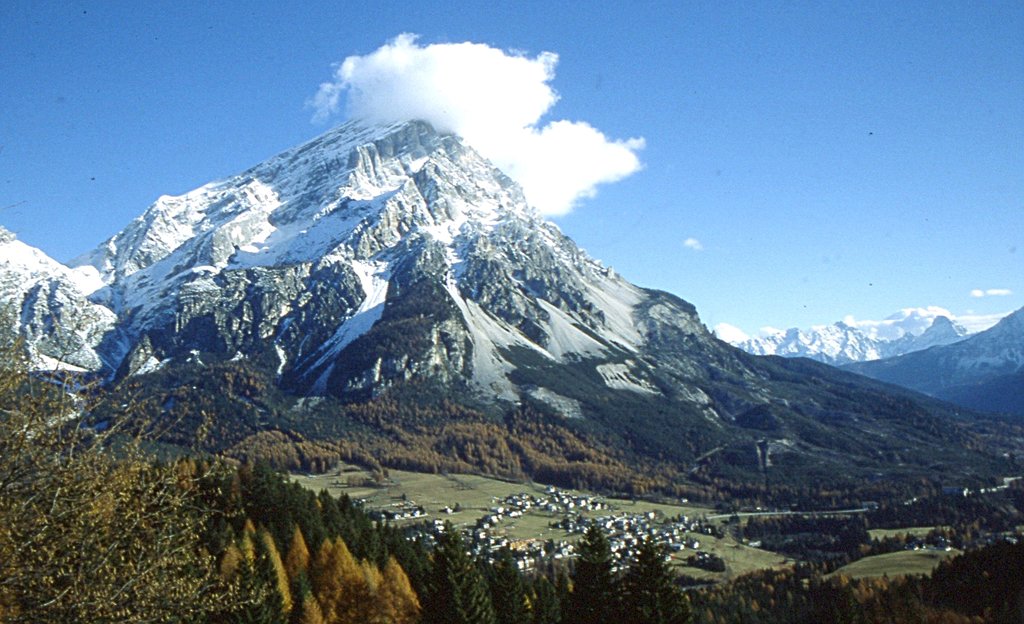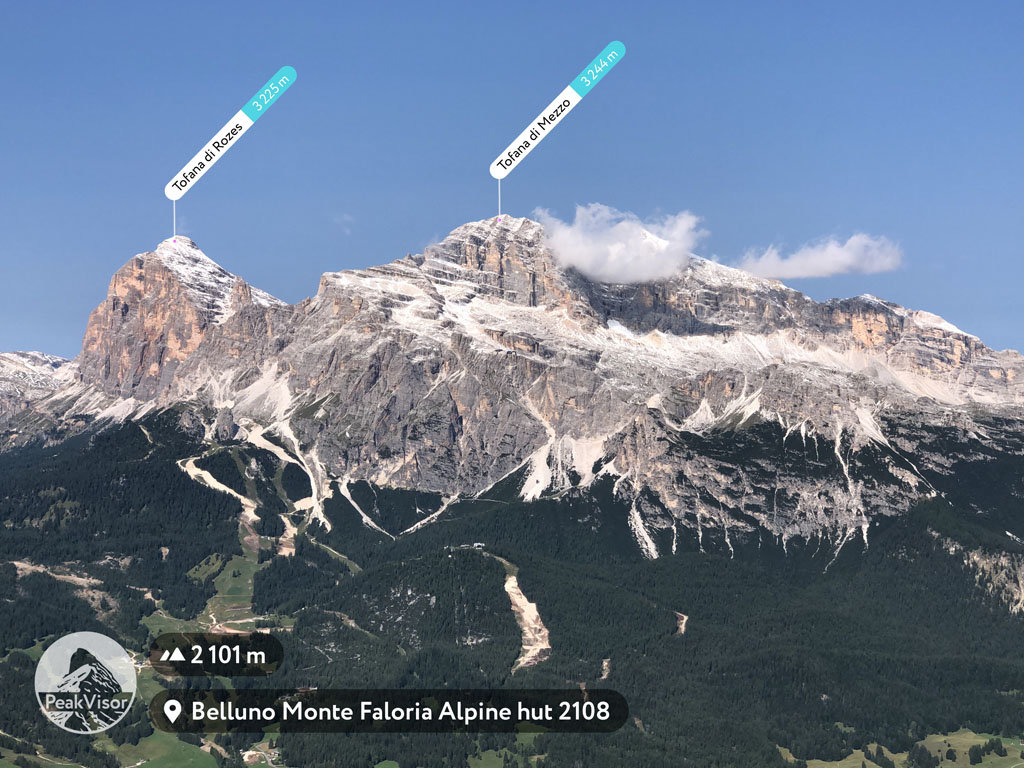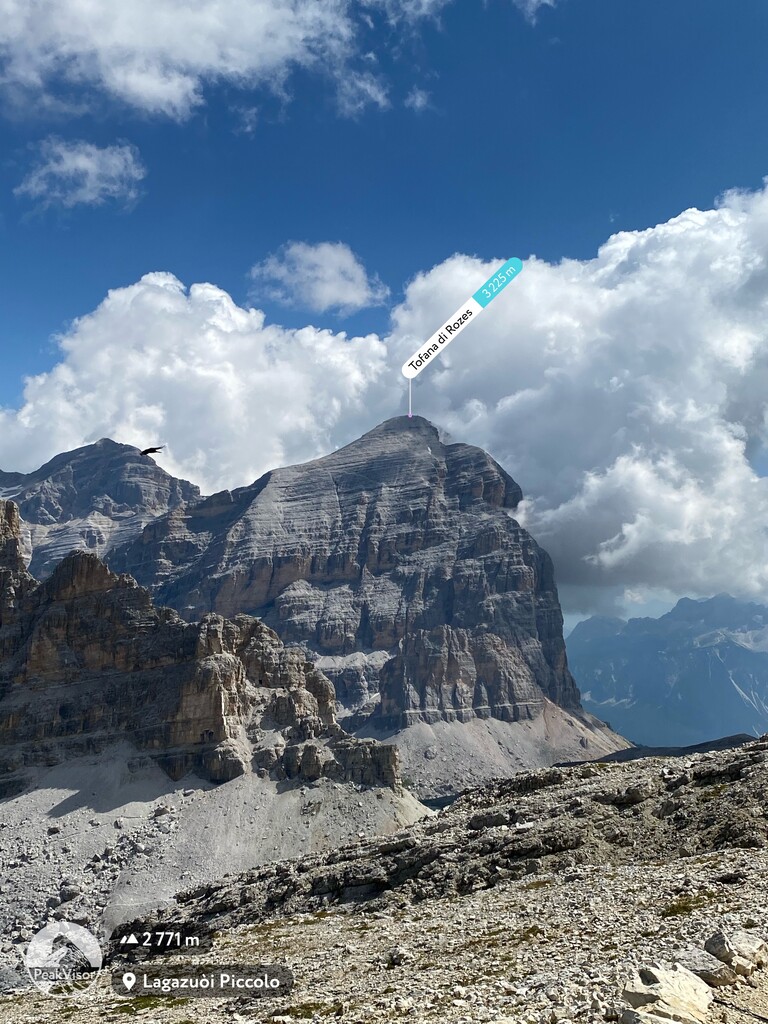Get PeakVisor App
Sign In
Search by GPS coordinates
- Latitude
- ° ' ''
- Longitude
- ° ' ''
- Units of Length

Yes
Cancel
Share ×

Scan the QR code and open PeakVisor on your phone
❤ Wishlist ×
Choose
Delete
Ampezzo Dolomites is one of more than 20 mountain groups in the Dolomites of northern Italy. The main feature of the Dolomiti Ampezzane is the world-famous village of Cortina d'Ampezzo, which is considered one of the four capitals of the Dolomites alongside Trento, Bolzano, and Belluno. There are 154 named peaks in Ampezzaner Dolomiten. The highest and the most prominent is Antelao (3,264 m / 10,708 ft).

The name of the Ampezzo Dolomites (Dolomiti Ampezzane/Ampezzaner Dolomiten) derives from the name of its main community, the village of Cortina d’Ampezzo. It is believed that the name itself comes from the following words:
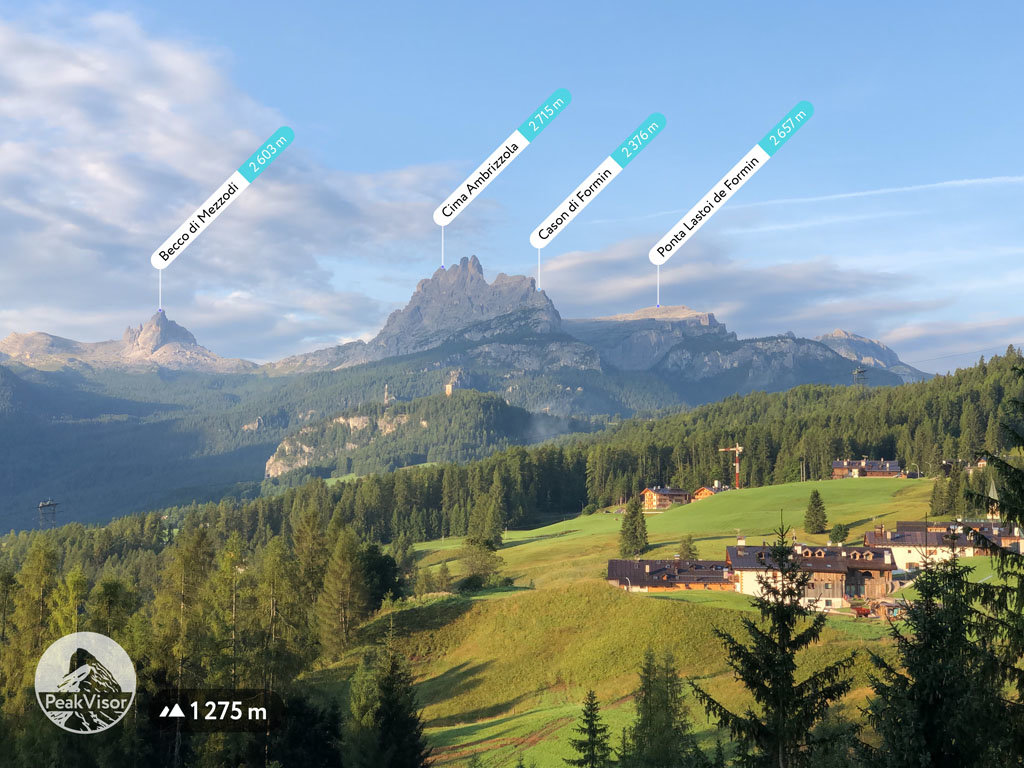
The full name of the city that is now Cortina d’Ampezzo was first mentioned in a local document in 1317 as Curtina ampitii.
But the word Ampezzo can be found in a much earlier document that dates back to June 15, 1156. In this document, the region is referred to as Ampicium Cadubri (Ampezzo del Cadore). Cadore is a region adjacent to Ampezzo. The name suggests that in those days, Cortina was part of it and not a separate territory like it is now.
In other words, there are still more mysteries in the etymology of the name of the region. But some regularity can be seen in the region’s name throughout the ages.
Because of the name of the village, the whole region of Ampezzo Dolomites is also often unofficially called Cortina Dolomites.
The Ampezzaner Dolomiten is located in the East Dolomites in the province of Belluno in the Veneto region in northern Italy.
The village of Cortina d'Ampezzo lies in the heart of the valley of the same name, Ampezzo, which is one of the five famous Ladin valleys along Fassa, Badia, Gardena, and Livinallongo. The Ladins are one of the main ethnic groups of the Dolomites.
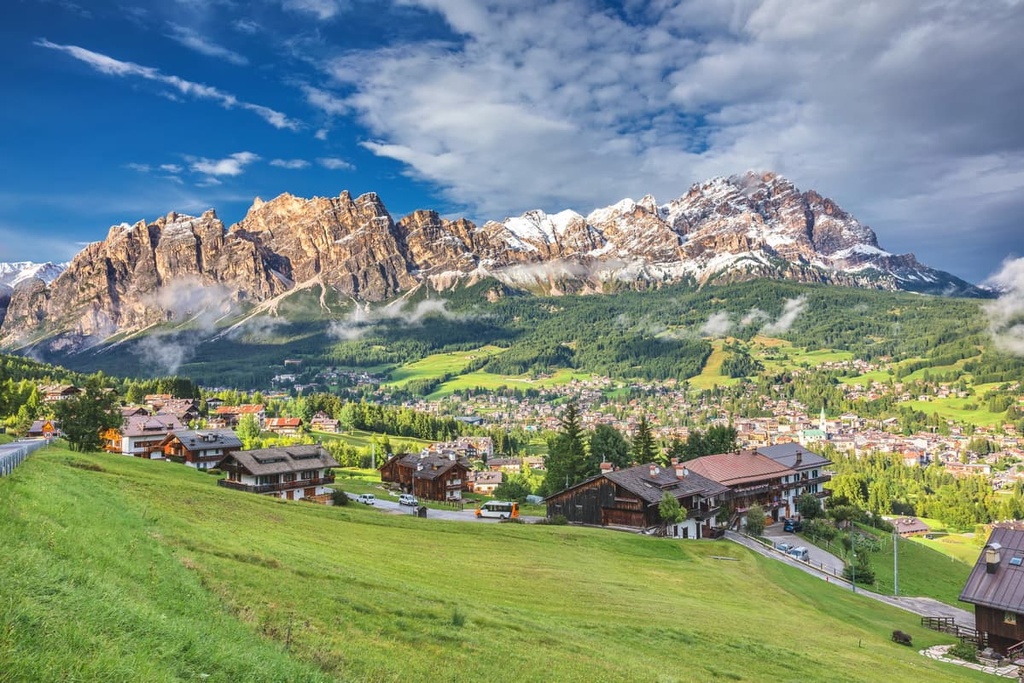
The boundaries of the group are difficult to define, but they are roughly as follows:
Of those mountain groups that I have not yet listed, the Ampezzo borders Pelmo, Civetta, Bosconero, Friulian Dolomites Nature Park, Sexten Dolomites, and Prags Dolomites.
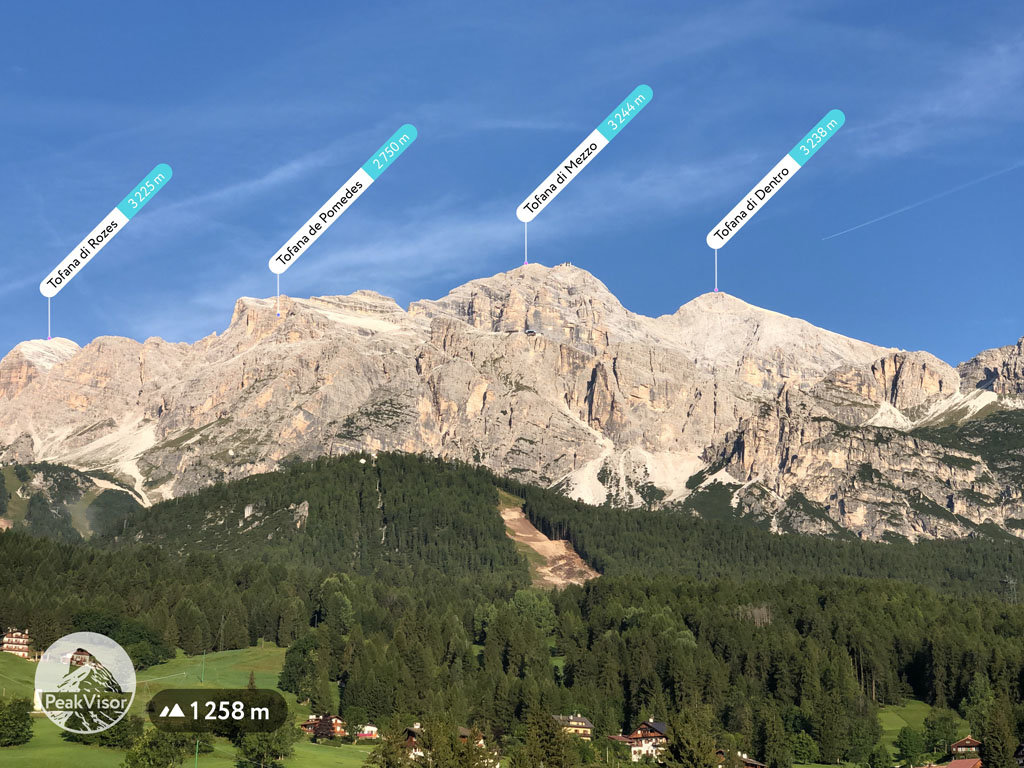
Finally, in the Ampezzo group you can find a natural park of the same name, Parco Naturale delle Dolomiti d’Ampezzo, which covers the northernmost parts of the range where it joins the Parco Naturale Fanes-Senes-Braies and Parco Naturale Tre Cime. All three form the largest protected area in the Dolomites.
The fastest and easiest way to get to Cortina d'Ampezzo is from the provincial capital Belluno, which in turn can be reached from Venice. The distance and travel time by car between Belluno and Cortina d’Ampezzo is 158 km (mi) or just over 2 hours.
From Venice to Belluno, you can also travel by train with Trenitalia and from Belluno to Cortina with the Dolomiti Bus. The trains and buses are frequent and aren’t too expensive. It's a great trip to take in its own right, even if you're not going to hike the mountains.
The geology of the Ampezzo region is similar to that of the rest of the Dolomites. These mountains are composed of a mineral with the same name, dolomite, which is a type of limestone. It was named after the French scientist and explorer, Déodat Gratet de Dolomieu, who first described it in detail in his scientific articles in the late eighteenth century.
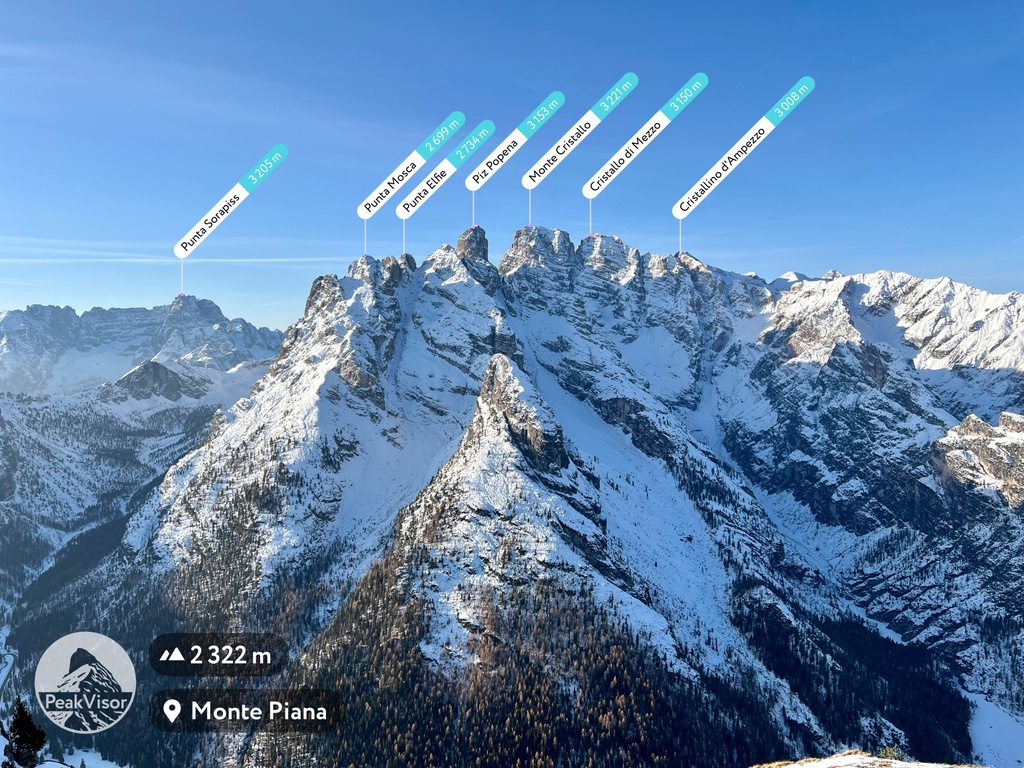
It is worth noting that the mountains in this group contained rocks that formed during the Mesozoic. But as is the case with the rest of the Dolomites, one can also find outcroppings of marlstone, claystone, siltstone, sandstone, tuff and conglomerates, which indicates the diverse geology of these places when examined in more detail.
Additionally, the Ampezzo Dolomites is a part of one of the nine great mountain systems in the Dolomites, according to the UNESCO classification system. Under this system, the range includes the northern boundaries of the group around the borders of its namesake park, as well as the Sorapiss and Antelao groups.
The Ampezzaner Dolomiten is one of the largest groups in the whole range. Given its size, the landscape of the group is extremely varied. It has everything found elsewhere in the Dolomites (pyramidal mountain peaks, valleys, alpine meadows, passes, lakes, etc.) as well as some unique features.
Besides the magnificent mountain peaks, the Boite River, which has formed one of the most magnificent valleys in the Dolomites, is one of the most important landscape features in the region. It attracts tens of thousands of tourists here every year, and for good reason.
The Boite River is one of the biggest rivers in the region. It begins at Campo Croce on the territory of the Parco Naturale delle Dolomiti d’Ampezzo, and it flows right through the village of Cortina d'Ampezzo from north to south into the even bigger Piave River near the town of Perarolo di Cadore. In other words, it is a tributary of the Piave.
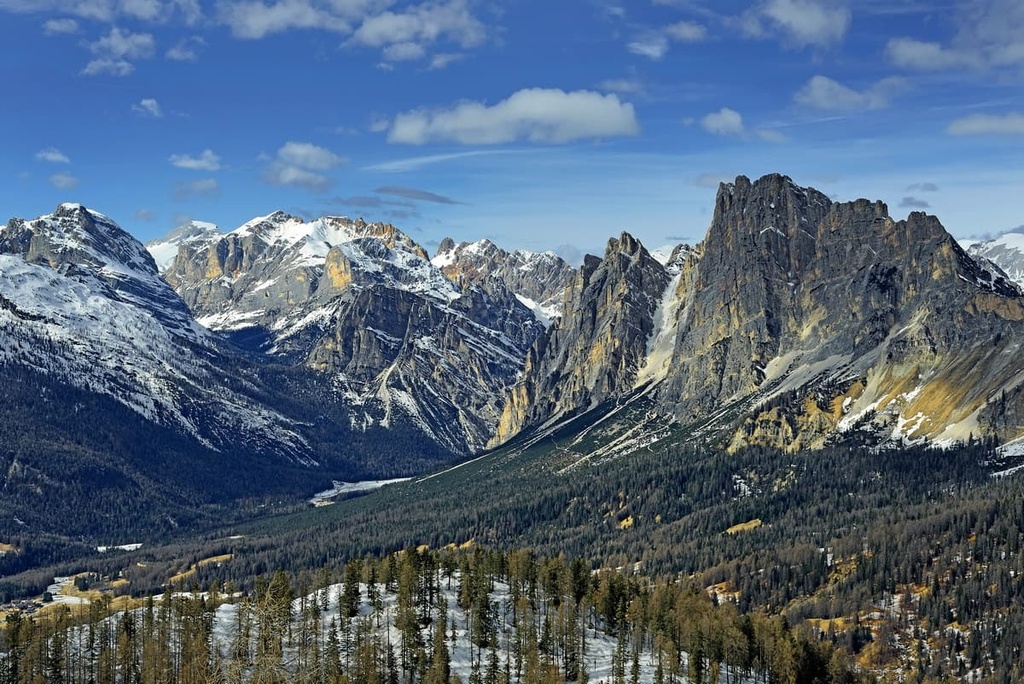
The total length of the Boite is 45 km (12.7 km / 27.9 mi). During its course, the river receives many smaller rivers and mountain streams, the largest of which is the stream from Monte Rite (2,138 m / 7,014 ft). The latter is known as the location of one of Messner's six museums. The river’s basin with all its smaller tributaries is 395.9 sq km (152.8 sq mi).
Several beautiful waterfalls can be found on the river, such as at the Forte della Chiusa di Venas fortress in the south of the mountain group. If you travel here in winter or in the off-season, you can see the frozen waterfall—one of the incredible natural wonders of this area.
The Ampezzo Dolomites or Dolomiti Ampezzane is one of several dozen groups in the Dolomites according to both of the two most common classifications of the Alps: AVE by the German-Austrian Alpine Club (AVE) and the Italian SOIUSA. Sometimes they are easier to confuse than to understand, so, for convenience, in PeakVisor, we use both to mark the mountains on the map.
In the Italian SOUISA the group is located in the Dolomiti di Sesto, di Braies e d’Ampezzo subgroup, which is part of the Dolomiti section of the Alps.
Because of the large size of the Ampezzo Dolomites, SOIUSA also subdivides it into two sectors or parts: Dolomiti Ampezzane Occidentali (Western Ampezzo Dolomites) and Dolomiti Ampezzane Orientali (Eastern Ampezzo Dolomites).
According to the same classification, these two subgroups include the following smaller six groups (clockwise from north to south):
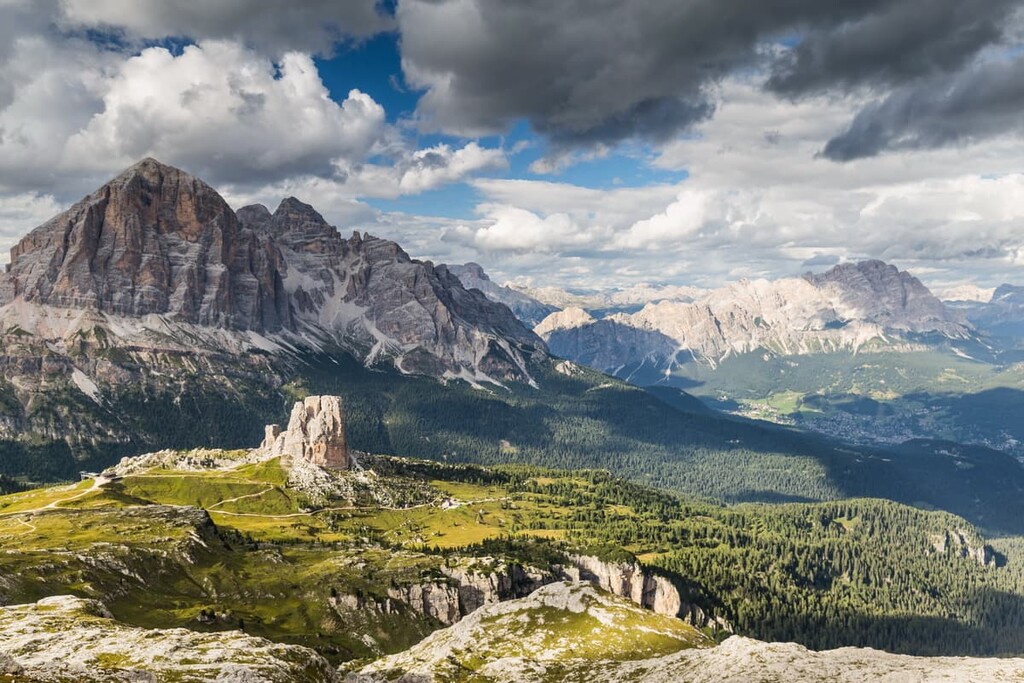
Here are some of the most interesting peaks in and around the Ampezzo Dolomites:
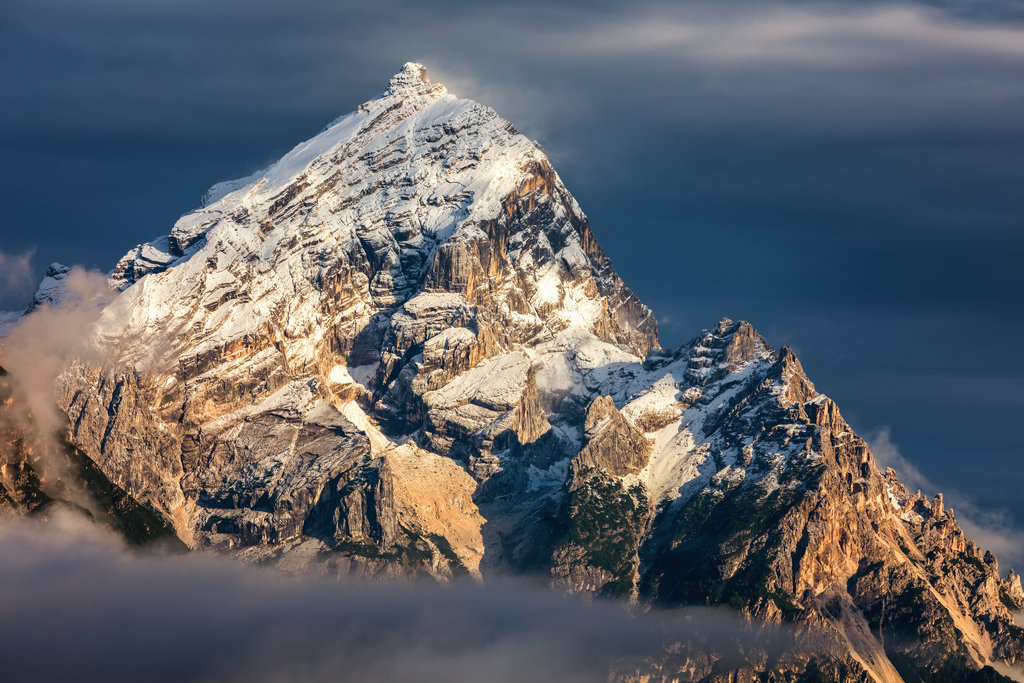
There are six main areas for hiking in the Ampezzo Dolomites or Ampezzaner Dolomiten according to the number of mountain groups in the region. Within each of them, you will find many interesting routes of varying lengths from half a day to several days.
In my opinion, here are the most interesting routes in each group:
Dolomiti Ampezzane also has many trails that start right in the village of Cortina d'Ampezzo and lead to one of the above groups and then back. For example, there is the Two Lakes Trail (12.9 km/8 mi, 3–4 hours, Easy, +659 m/+2,162 mi).
The main attractions on the route, besides the giant peaks of Tofane, are the two small lakes, Ghedina and Drusciè. The route is suitable for those who do not intend to spend more than one day in Tofane but want to get closer to it and have a nice view of Cortina.

There are also the multi-day long trails going through Ampezzo Dolomites:
These treks will suit travelers from abroad who want to spend a week or more in the Dolomites.
A separate, seventh area for hiking, is, of course, the Ampezzo Dolomites Nature Park in the north of the Ampezzo Valley. It also includes several trails in the neighboring Braies Dolomites.
If you get to the park, be sure to walk from rifugio Piazza / Plätzwiese to Monte Specie / Strudelkopf (4.1 km/2.5 mi, 3 hours, Moderate, +359 m/+1,177 ft). This is the main trail in the heart of the Prato Piazza Alpine meadow in the eastern part of the Braies Group. It leads to the summit of the main observation point in the area.
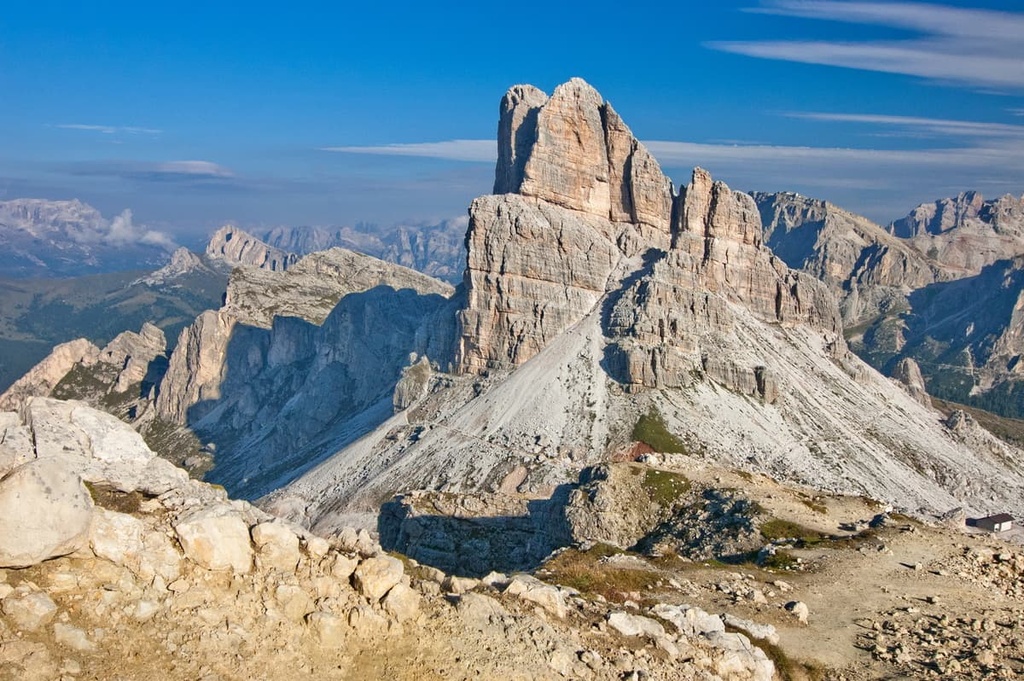
Ampezzo Valley is also home to one of the largest ski areas in the Dolomites. As well as hiking trails, there are ski slopes of varying lengths and degrees of difficulty in all the mountain groups that surround the village of Corina d'Ampezzo.
For example, in the Tofane Group alone, there are 37 slopes (6 black, 12 red, and 19 blue runs) for a total length of over 40 km (24.8 mi) and 11 lifts (1 gondola,1 cable car, 9 chairlifts).
In total, in the whole Cortina d’Ampezzo Ski Area, there are dozens of ski runs. Their total length is more than 120 km (74.5 mi).
It’s also good to know that, in 1956, Cortina hosted the Winter Olympics, which will return to Ampezzo Valley in 2026 after a hiatus of 70 years. However, it has also played host to numerous World Cups and World Ski Championships, the most recent of which was in the winter of 2020–2021.
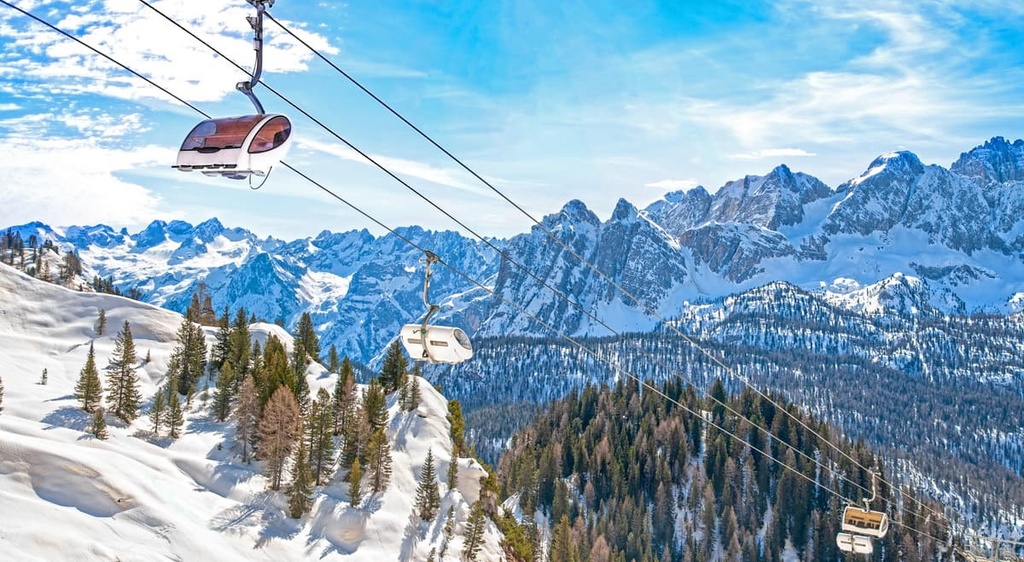
Starting with the 2021–2022, winter season you can also find detailed information about skiing in Cortina d’Ampezzo and all the ski resorts in the Dolomites directly on PeakVisor’s World Mountain Lifts page. This page includes an interactive table and map that shows which lifts are open right now or closed.
Generally speaking, Cortina d’Ampezzo Ski Area is open from early December to the first week of May, though this can change based on weather conditions.
During your trip to the Ampezzo Dolomites, you can get more practical and inspiring information about the range and the Dolomites in general at the official information point located in the center of Cortina d'Ampezzo.
Info Point Cortina (Ufficio Informazioni Turistiche)
Corso Italia, 81, 32043 Cortina d'Ampezzo, BL, Italy
+390436869086
Opening Hours:
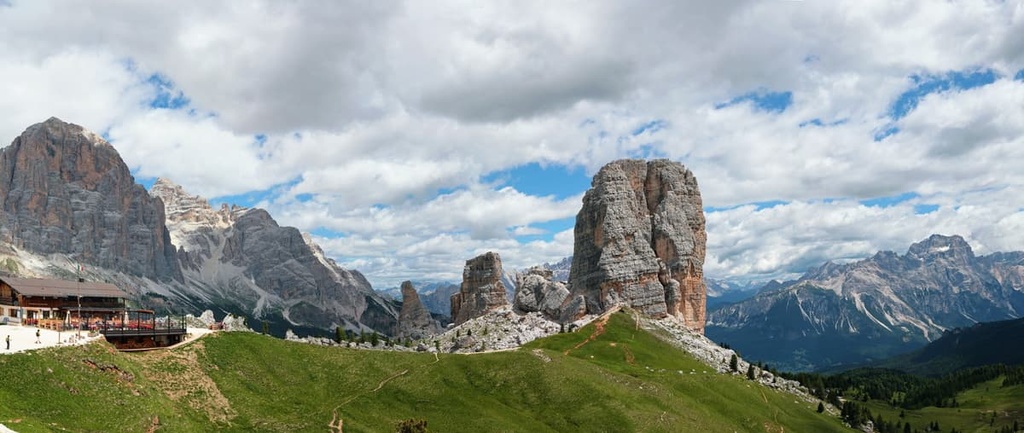
As elsewhere in the region, while hiking and walking in the Ampezzo Dolomites, you can stay overnight in one of the mountain huts (rifugios).
More specifically, you will find four huts in the Tofane Group, seven huts in the Nuvolau, one hut in the Cristallo Group, and four huts in Sorapiss. There are also at least a dozen free alpine bivouacs in all the groups combined.
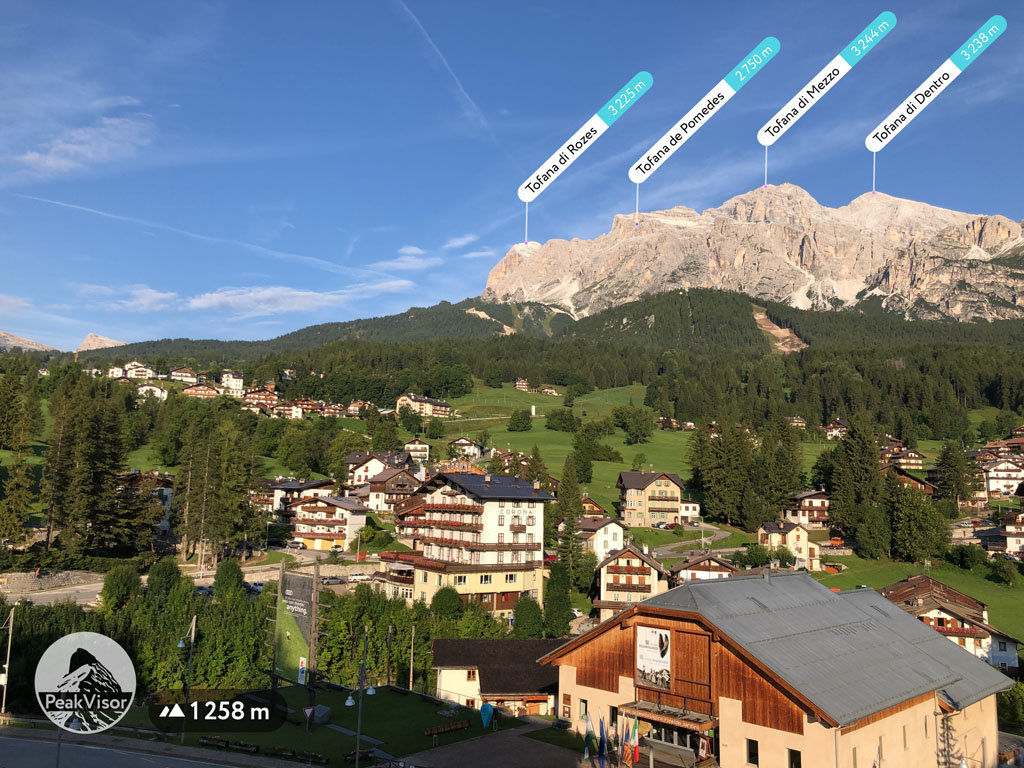
In addition to Cortina d’Ampezzo, the Dolomiti Ampezzane is literally surrounded by various settlements and smaller resorts.
In the southeast, the main centers of life and tourism of the region are the two neighboring towns, Calalzo di Cadore and Pieve di Cadore, which are the last stops of the railway from Venice.
They are situated on the picturesque Centro Cadore Lake. Going west along the borders of the Ampezzo and Mount Antelao to Cortina d'Ampezzo you will find several other towns whose names end in “Cadore.”
To the east of the group, there are no large settlements, it is wild because its borders run along the borders of the Sorapiss and Marmarole Groups.
In the northeast, the main resort is the small village of Misurina, which is located on the lake of the same name and is one of the most beautiful in the Dolomites. It is also the last stopping point on the way to the peaks of Tre Cime di Lavaredo.
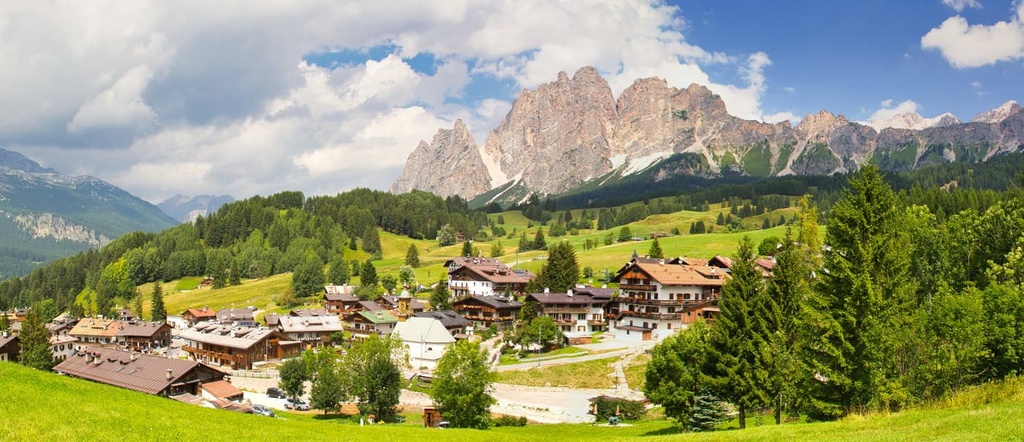
In the north of Ampezzo Dolomites, there are also no large settlements or resorts because there is a natural park. This part of the region is suitable for those who want to get lost in the wilderness.
To the west, the nearest large towns to the group are the neighboring Caprile and Santa Maria delle Grazie. I passed them by bus on my way to Marmolada and Sella. They are typical Alpine villages that will impress you the first time you come to the Dolomites and will make you look at them in detail during your following visits.
Check out the official tourist website of the Ampezzo Dolomites to learn more: Dolomiti.org.
Explore Ampezzo Dolomites with the PeakVisor 3D Map and identify its summits.
